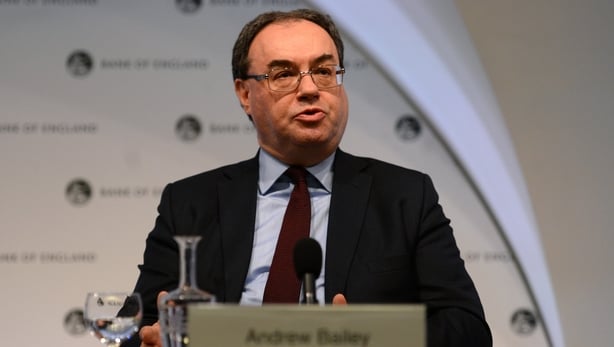The Bank of England cut interest rates from a 16-year high today after a narrow vote in favour from policymakers divided over whether inflation pressures had eased sufficiently.
Governor Andrew Bailey - who led the 5-4 decision to lower rates by a quarter-point to 5% from 5.25% - said the Bank of England's Monetary Policy Committee would move cautiously going forward.
"We need to make sure make sure inflation stays low, and be careful not to cut interest rates too quickly or by too much," he said in a statement alongside the decision.
Today's decision was in line with the forecast in a Reuters poll of economists but financial markets had only seen just over a 60% chance of a cut.
Rates have been on hold for almost a full year - the longest period rates have been left unchanged at the peak of a Bank of England tightening cycle since 2001 - and this is the first cut in rates since March 2020, at the start of the Covid-19 pandemic.
In June the Bank of England voted 7-2 to keep rates on hold, and minutes of the most recent meeting showed the decision to cut rates had been "finely balanced" for some members - echoing the language used previously when rates were kept unchanged.
None of the policymakers who changed their vote at this meeting - Governor Andrew Bailey and Deputy Governors Sarah Breeden and Clare Lombardelli - had spoken publicly about monetary policy since the Bank of England's last meeting in June.

Speaking opportunities had been limited by an election campaign which ended on July 4, which brought the Labour Party to power with a large majority.
The Bank of England said policymakers had been briefed on the government's public sector pay and fiscal policy announcements this week, but their impact would only be incorporated into the bank's forecasts after the October 30 budget.
British consumer price inflation returned to the Bank of England's 2% target in May and stayed there in June, down from a 41-year high of 11.1% struck in October 2022.
This leaves British inflation lower than in the euro zone - where the European Central Bank cut rates in June - and the US, where the Federal Reserve last night kept interest rates steady but opened the door to a September cut.
However, the Bank of England expects headline inflation to rise to 2.75% in the final quarter of the year as the effect of last year's steep falls in energy prices fades, before returning to its 2% target in early 2026 and later sinking below.
The long time lags for interest rates to affect inflation mean the Bank of England is more focused on what it sees as medium term drivers of inflation: services prices, wage growth and more general tightness in the labour market.
Services inflation came in well above the Bank of England's forecasts in June, but the bank put this down to "volatile components" and regulated prices that were influenced by high headline CPI earlier in the year.
Wage growth at nearly 6% is almost double the rate the Bank of England views as consistent with 2% inflation but is slowing in line with the central bank's expectations.
The Bank of England now thinks the UK economy will expand by around 1.25% this year, revised up from its previous forecast of 0.5%, reflecting stronger-than-expected growth during the first half of this year.

UK unemployment will rise slightly as high interest rates continue to bear down on growth, the forecasts showed, reducing upward pressure on inflation.
However, the Bank of England acknowledged the risk that inflation pressures might prove more persistent and keep inflation above target for longer than its main forecast.
Before the meeting, financial markets priced in two quarter-point cuts by the Bank of England this year.
The forecasts were based on market expectations which show interest rates falling to about 3.7% by the end of 2026.
Next month the Bank of England will also need to decide whether it continues the £100 billion a year reduction in its bond holdings built up between 2009 and 2020.
In its report today, the Bank of England stuck with its assessment that these sales had a limited impact on the gilt market, and that the high level of interest rates gave it scope to fine tune monetary conditions if the impact proved greater in the future.

